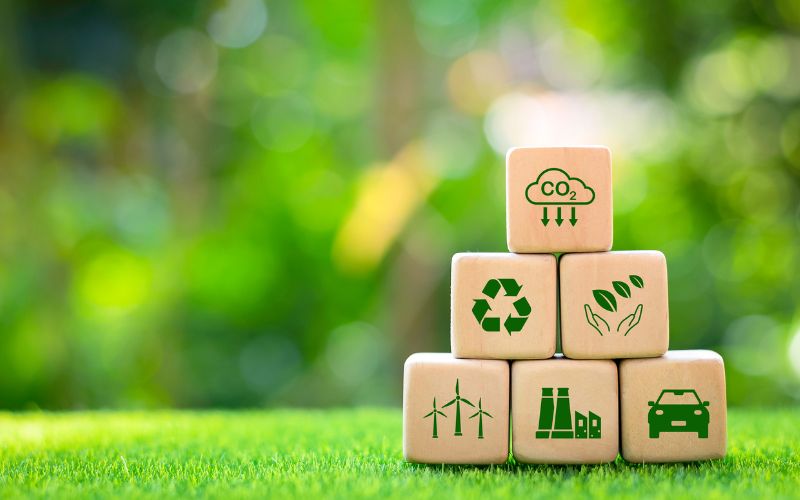“In 2024, the key theme is the efforts being made by mining and metals companies to reduce their carbon emissions. They’re doing so in an environment of greater volatility in commodity prices, geopolitical change, and a technology capability and skills shortage presenting both great challenge and huge opportunity for the sector.” Trevor Hart, Global Sector Lead, Mining at KPMG International
“The greener initiatives include establishing best operating regime (enabled by AI/ML), transitioning to renewables, adopting circularity (usage of scrap and recovery of metals from process residues) and development / usage of green disruptive technologies.” Amit Bhargava, National Leader – Metals and Mining, KPMG in India
KPMG has released its Global Metals and Mining Outlook for 2024 – ‘Strategies for decarbonization and operational excellence’. Decarbonization is the key to operational excellence for metals and mining companies. This report underscores the necessity of investing in decarbonization — not just for environmental benefits, but for transformative operational gains. This shift promises enhanced resilience agility, and a sustainable economy.
The report draws from the insights of over 453 C-level executives from across 20 countries in the largest survey of its kind, and interviews with leading industry thinkers, revealing that effective decarbonization can revolutionize business efficiency and profitability. This report equips executives and stakeholders with crucial industry insights and best practices to navigate these challenges.
Some key findings include:
61 percent more confident about growth prospects now versus two years ago.
57 percent see integration of decarbonization goals into corporate strategy as key.
47 percent say skill shortages is the most important challenge to overcome in technology implementation.
66 percent say more volatile output prices have heightened business risk.
47 percent said their biggest opportunity of the next five years is transforming cost-efficiency through technology investments.
Trevor Hart, Global Sector Lead, Mining at KPMG International, said, “Mining and metals companies are pivotal in the energy transition. In 2023, the KPMG Mining and Metals Outlook focused on the crucial role played by the mining and metals industries in enabling the global economy to shift to a carbon-free future. In 2024, the key theme is the efforts being made by mining and metals companies to reduce their carbon emissions. They’re doing so in an environment of greater volatility in commodity prices, geopolitical change, and a technology capability and skills shortage presenting both great challenge and huge opportunity for the sector.”
Commodity price risk
As commodity prices remain front of mind for the metals and mining sector, the report shows that commodity-price volatility has increased over the past 10 years, driven by various new risks. Sixty-six percent of the executives surveyed said the volatility of output prices had increased in the past two years and 53 percent said input-price volatility has also increased.
He further added, “The last time there were such elevated levels was prior to the global financial crisis of 2008-09, when increased capital expenditure and higher cost structures led to subsequent asset write-downs. Much of the past decade has been spent rebuilding balance sheets and executives should bear this in mind as they invest in new technology and decarbonization projects. “Our report highlights the levers necessary to sustain increased volatility and succeed through the cycles for a long term, sustainable business. A focus on productivity gains, technology deployment and funding strength are more important than ever.”
Accelerating technology investments – Four ways technology drives transformation:
Optimize processes – Achieve the best possible operating regime to have the leanest carbon footprint for the current operating configuration. The idea is to bring predictability and consistency of operations, thereby reducing the specific consumption of energy and carbon usage in the operations.
Transition to renewables – There are storage and generation technologies emerging that enable renewable energy providers to meet continuously the needs of industrial consumers. This and a reduction in tariffs are making energy transition a reality.
Transform operating models – Advanced technologies can disrupt operating models, where we see routes to manufacturing of metals based on recycled scrap. Also mining and smelter residues are being processed to recover metals.
Technology disruptions – The most impactful and toughest to commercialize are the leaner carbon technologies that help deploy newer process technologies to reduce carbon intensity.
Amit Bhargava, National Leader – Metals and Mining, KPMG in India, says, “Metals and mining sector is poised for an unprecedented growth phase, in India. There are significant expansions underway, while equally enhanced focus on decarbonization. The greener initiatives include establishing best operating regime (enabled by AI/ML), transitioning to renewables, adopting circularity (usage of scrap and recovery of metals from process residues) and development / usage of green disruptive technologies. Greener product is clearly part of enhanced value proposition for customers and there is a growing awareness around green financing.”
Five ways to future-proof metals and mining:
The metals and mining industries must accelerate the reduction in their carbon emissions while striving to meet the growing demands of customers that are decarbonizing their operations. This is extremely challenging, but there is a big payoff: If they manage a successful decarbonization program, it is likely to transform their overall operations and add business value. To achieve the goals of metals and mining companies, here are five takeaways for executives:
It’s the ecosystem: Metals and mining companies have never needed to collaborate as closely with their customers, suppliers and business partners as they do now. Open innovation should become the order of the day as executives search for the most effective partnerships in their drive to decarbonize.
Transformative AI: Artificial intelligence and its associated technologies of machine learning and predictive analytics are going to revolutionize every aspect of mining and metals, from surveying ore bodies to the predictive maintenance of electric arc furnaces. Metals and mining companies must use AI wisely and learn from others in their ecosystem about best practices.
Humans at the heart: Highly skilled people are required not only to keep AI and other new technologies on the rails but also to maximize the benefits and minimize the risks. Opening mines and smelters in new regions offers the opportunity to attract new workers who are keen to be part of the energy transition.
Many financial levers: There is an array of financing opportunities, indicating that banks and other financial intermediaries are keen to work with metals and mining companies to help fund their operational transformation. But the area of greatest divergence between expert opinion and the survey findings is mergers & acquisitions.
Strengthen staying power: The story of the next quarter century for mining and metals companies is essentially one of resilience. They are rightly focused on long-term sustainability for themselves, for their customers and for the planet.

